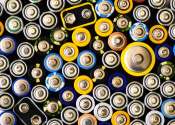Next generation lithium-sulfur battery solves the loss of sulfur problem
The research outcome of Korea Electrotechnology Research Institute (KERI) related to "low-cost and flexible high-energy-density lithium-sulfur batteries" was recently published on the front cover of the journal Small.
May 12, 2022
0
12









